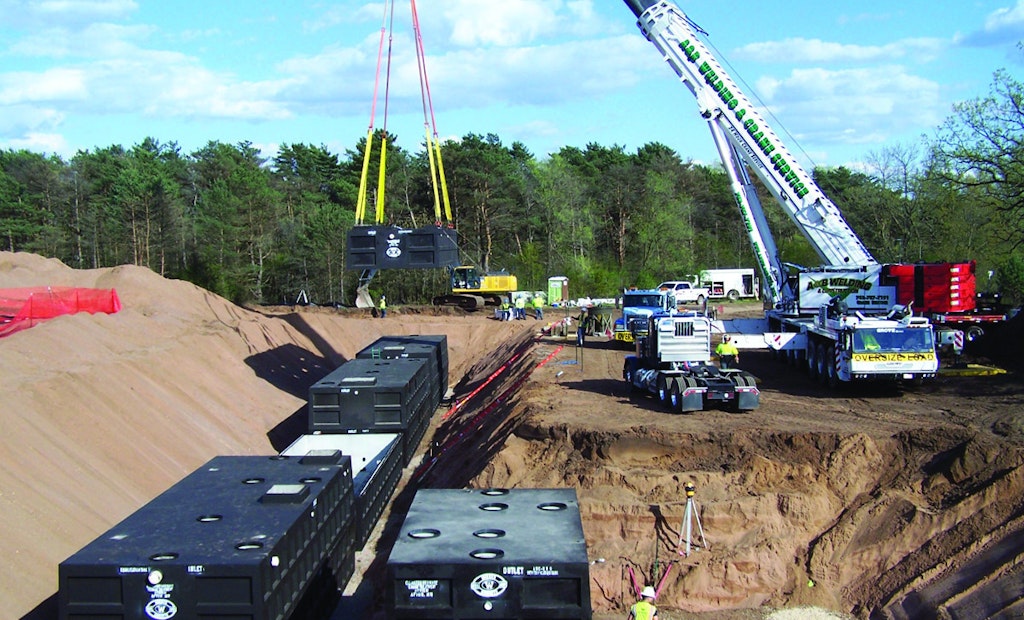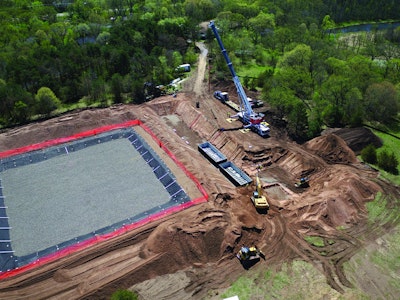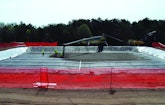
Workers install a series of septic tanks to handle a peak daily flow of 55,000 gallons at the front end of a cluster system in Sara Heger’s community of Afton, Minnesota. (Photos by Sara Heger)
A cluster septic system is defined as a wastewater treatment system designed to serve two or more sewage-generating dwellings or facilities with multiple owners. They can be privately or publicly owned and managed. Cluster systems are commonly utilized to solve an existing problem...








